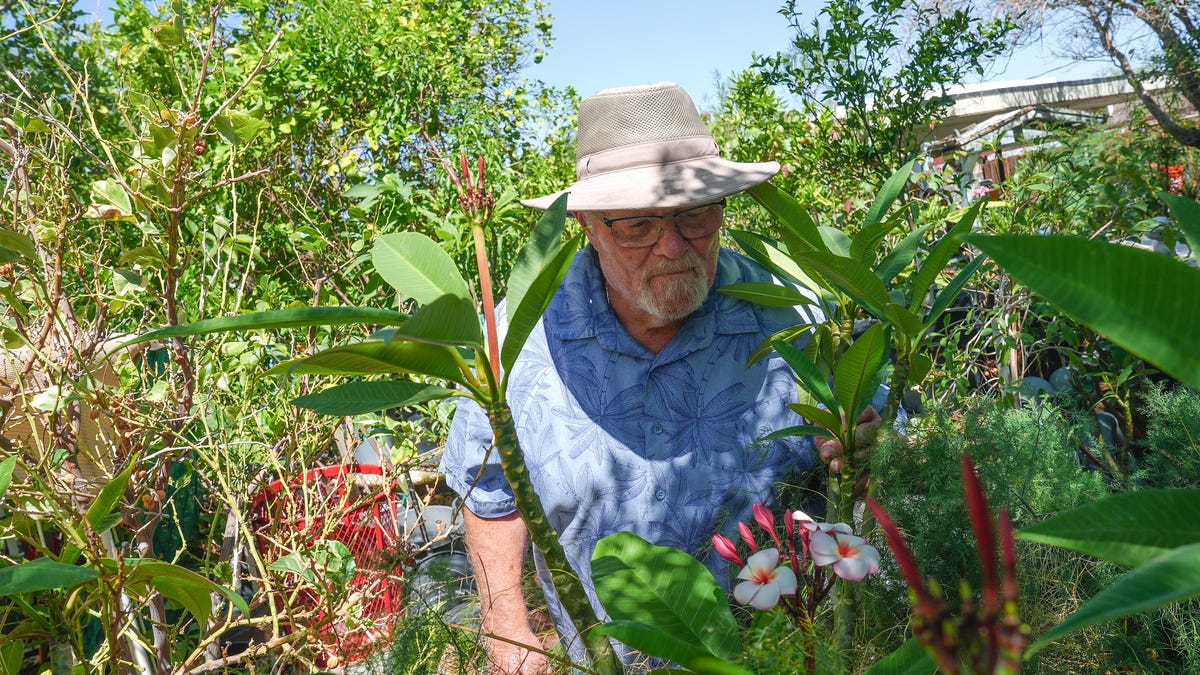We may earn a commission from links on this page.
I’m a taskmaster, so when I see a problem, I want to fix it—immediately. The problem in the garden is that this can cause you to displace other priorities and end up burnt out. On Friday, I talked about the three tasks I tackle every day in the garden so I can get in and out in a short time (that will vary based on the size of your garden). It’s hard to resist tackling everything that needs to be done, and if I’m not careful, I can get distracted by needing to deadhead the sweet peas or sweep up the garden paths. By keeping clear in my head that some tasks are weekly and thus, don’t need to be dealt with until the weekend (or whatever day you designate), helps me stay on task, and keep the garden moving forward.
Once a week, I chuck my pruners, loppers, gloves, some antibacterial spray for the tools, tomato clips, garden velcro and any other clips I need, and my fertilizers into my wheelbarrow or garden tote and head into the garden. I grab the seeds I plan to succession sow and stick them in my pocket. And then here’s what I do:
Adjust trellises
I have lots of trellises and lots of plants growing on them. For items like tomatoes, they may need to be pruned and clipped onto the trellis, so I do this weekly. I spend a little time ensuring the beans are clinging to trellises instead of each other, that the espaliers are pruned and moving in the right direction, adjusting the clips. I weave the nasturtiums through the cattle panel so they’ll continue to grow up it—the same for the pumpkins and squash. By spending a little time paying attention to all your trellises once a week, you stay on top of the task.
This will already involve some pruning, so take the time to prune anything that needs it. My berry canes are absurd this time of year and must be clipped back weekly. I deadhead flowers that need it, and will spend time on spent shrubs like lilac and peonies, and keep my elderberry trees, which about to fruit, in check. Any pruned greenery goes into the wheelbarrow, unless it looks diseased, and then it goes right to the trash can.
Reseed
I keep the seeds I succession sow by the door and stick them in my pocket: radishes, carrots, scallions, lettuce, and turnips. That way, when I’m at the right bed, I just grab them from my pocket and seed what I’d like to. This ensures the sowing is happening frequently.
Fertilize
I like to apply a fish emulsion fertilizer once a week (I hold strong to the garden saying “once a week, weakly.” I hook up to my hose and go around, making sure to focus the water at the root of the plants, not on the plants unless it is a foliar spray. Depending on the plant, I may add additional amendments. For instance, my corn gets a side treatment of blood meal (pure nitrogen) once during the summer. Tomatoes get CalMag every few weeks. I just make sure to go around and treat anything that needs it, but almost all my plants get a general life from the fish emulsion, although this is on top of the slow-release fertilizer and any specialized fertilizer I use when I plant.
Check water systems
I am always mortified how quickly problems can crop up in a watering system, and you tend to only notice it when your plants tell the tale. This time of year, I check my water once a week. I run through each of my water zones on my drip system, and walk around, listening for leaks (you can hear them) and just looking at the farthest beds to ensure water is still reaching them. This has an added benefit of watering in the fertilizer and seeds a bit. You don’t need a full cycle for each zone, just long enough to check it.
Pickup one extra task
A garden is a living thing, so there’s always something extra that needs to be done. A fountain needs rebuilding, a tree needs trimming, or the garden bench is looking a little loose. The fruit needs to be shrouded, or you want to plant a bed out, the walkways could use a sweep, or the edging should be taken care of. Don’t take on too many of these, choose one. Next week, do another.
At the end of the tasks, empty your wheelbarrow into the compost and take a look around. The garden should be pretty well maintained if you stick to the plan, and hopefully, you do not feel overwhelmed.









